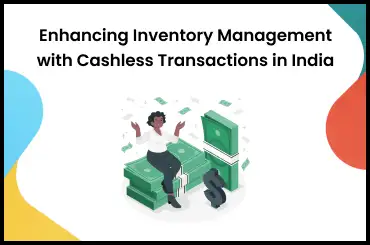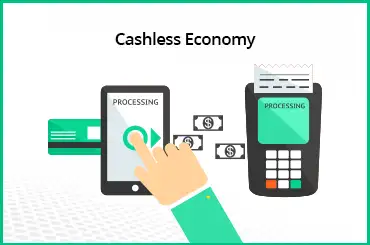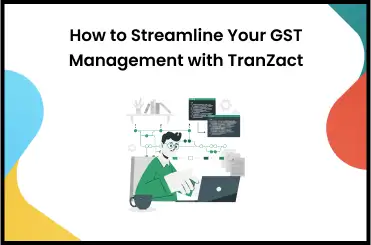The GST refund process refers to a series of steps wherein registered taxpayers submit a specific form to the GST authority. This form consists of relevant information followed by a procedure to claim the amount of tax that exceeds the taxpayer's GST liability.
After Goods and Service Tax, known as GST, came into action in 2017, every registered taxpayer or business strictly needs to comply with this taxation law. GST refund is an important aspect of this taxation system that ensures businesses maintain a smooth cash flow and saves them from losses. However, many taxpayers are not very clear about the GST refund process. Therefore, in this article, we have elaborated on the detailed GST refund procedure covering situations that can lead to refund claims, steps for claiming a GST refund, and more.
A Detailed Guide on Basics of the GST Refund Process
A GST refund means claiming back the tax that you have paid in excess of what your actual GST liability is. There are various circumstances under the GST system where taxpayers can claim the excess tax that they have paid to the government back.
For example, the export of goods is tax-free as they are zero-rated supply; and if you have paid any tax for it, you can claim the amount back from the government. A claim can also be made if there is any balance of the electronic cash ledger if any tax has been paid by mistake, or if there is unutilized accumulated input tax credit.
Now, if you are eligible to claim the return, you need to file a refund by following the step-by-step procedures. You need to submit your documents and necessary information, as well as a declaration to claim a GST refund.
Complete the Steps for Claiming a GST Refund
If you are among those who are confused about the GST refund, you must know that the GST refund process is very simple. Here are the steps to claim your GST refund.
- Step 1: Login to the online GST portal.
- Step 2: Navigate to the 'Service' tab and then click 'Refund'.
- Step 3: Here you will get the 'Refund pre-application form' that you need to fill up. The information you need to give is the nature of your business, the Aadhar number of the primary authorized signatory, income tax details, capital expenditure and investment, advanced tax paid, issuing date of Importer Exporter Code (IEC) only if are an exporter, and value of export.
- Step 4: After you have given all the information asked on the form, click the 'Submit'
tab. You will get confirmation of the submission of the form on the screen. You can also track your GST refund status on the portal after you submit the request form.
What are the Conditions for Claiming a Refund in All the Cases Except Export of Goods on Payment?
Certain conditions need to be met before you file a GST refund. Here the conditions for claiming a GST return have been declared for any type of case except the export of goods on payment.
- The first and most important condition is that the refund application must be made by the taxpayer within 2 years from the relevant date.
- The taxpayer must also file GSTR-3 for the relevant tax period.
- The taxpayer should assure that the outward supplies are not nil rated or exempt.
- In the case where the exportation of goods has been made the taxpayer must assure-
- The goods exported are not subject to export duty.
- A refund of central tax paid or integrated tax has not been availed.
- If you fall under the category of a Casual Taxable Person or a Non-Resident Taxable Person, you need to file all your monthly tax returns during the registration period.
- If the taxpayer has made an intra-state supply that is held as an inter-state supply and paid CGST and SGST/UTGST on that, an accurate amount of IGST has been paid.
- If you are claiming a refund of fewer than Rs. 2 lakhs, you should submit documentary evidence. Otherwise, you can give a declaration with the evidence you already have.
These are certain conditions you must fulfill before going through the GST refund process. Only if these conditions are met, your application would be granted. However, with time and various conditions of the market, the rules have been changed in some cases. There are several updates that you as a taxpayer must be aware of and that can save a lot on your GST.
- Under section 54 or 55 of the CGST Act, it was declared on 5th July 2022 that the taxpayers can exclude the period of the Covid-19 pandemic which is from 1st March 2020 to 28th February 2022 while calculating the time to file a GST refund.
- As per the updated budget on 1st February, section 54 is amended and now a refund for the electronic cash ledger balance can be claimed through a particular process or form that is provided.
- Also, UN agencies can now get up to 2 years instead of 6 months to claim GST returns. The time will be calculated from the last day of the quarter when the supply was received.
Situations That Can Lead to Refund Claims
A company's overall growth is a result of so many factors and successful tax administration is an important one. Trading requires the continuous release of funds that can maintain production and supply flow as well as a balanced accounting structure.
Therefore, businesses of any type selling either goods or services who are registered taxpayers of the country need to emphasize GST payment and return filing whenever required or possible. Here we have listed down the situations that can lead a tax-paying company or entity to claim a GST return. The situations are-
- The balance amount in Electronic Cash Ledger can be claimed back by the company. The request should be furnished with GSTR3, GSTR4, and GSTR7 forms under section 39 within 2 years from the relevant date.
- A taxpayer can claim the accumulated Input Tax Credit if it is not utilized yet for paying taxes due to zero-rated sales or an inverted tax structure. The return file can be done at the end of a tax period.
- For the export of goods and services, GST return can be claimed as no GST is levied on exports of goods and services.
- Tax paid on deemed exports is also returnable.
- You can go for a GST refund process if you have paid an excessive amount of tax by mistake.
- A refund of pre-deposited tax is also possible.
- Embassies can claim a GST refund on the purchase of goods or services.
- Supplies to developers of any sector are eligible for GST return.
- You can claim a refund if it arises from judgment, order, direction, or decree of the Appellate Authority, Appellate Tribunal, or any law court.
- Finalization of provisional assessment can lead to claiming for GST return.
- Overseas tourists are eligible for a refund if they purchase commodities within the country by paying GST and then carried to any international place.
- CGST and SGST/UGST paid on intra-state supply but held as inter-state supply is also refundable.
- You can claim the refund when return vouchers are issued for taxes paid in advance but the commodities or services for which you have paid the tax were not supplied.
Whenever applying for a GST refund, make sure you have the right documents as discussed in the next section.
Documents Required
Following the GST refund process step-by-step will not aid a taxpayer when the correct documents are not provided. You must submit appropriate documents on the GST portal to make a claim for a tax refund. These are:
- Income tax-related documents
- Interest paid or any other forms of payment done
- A copy of proof that shows tax is deposited along with the invoices
- Export related documents
Follow the Proper GST Refund Process
A proper GST refund procedure helps you claim the amount of tax you have paid in excess and thus you never lose valued funds when it comes to GST regulations. This helps business entities to maintain a constant and considerable amount of cash flow in the business.
Trusted by over 10,000+ SME manufacturers, TranZact is a GST-compliant, cloud-based, inventory and production management software. It helps you to maintain and create GST-related documents seamlessly by digitizing your business and taking it many notches ahead. It provides GST invoices, e-way billing solutions to quotations, approvals, business reports, inventory insights, and more, in a user-friendly way. TranZact will help you comply with the GST system effortlessly!
FAQs on GST Refund Process
1. What is a refund under GST?
When you have paid an excessive amount of GST that exceeds your GST liability, you can get the extra amount of tax refund under GST from the authority by making an application with the right GST refund process.
2. What are the forms under the GST refund process?
There are different types of GST refund forms depending on the type of tax you pay. The types are- GST RFD - 01, GST RFD - 02, GST RFD - 03.
3. What documents are required for a GST refund?
The documents required for GST refund are income tax-related documents, interest or any other payments, a copy of proof of tax deposited with invoices, and export-related documents.
















